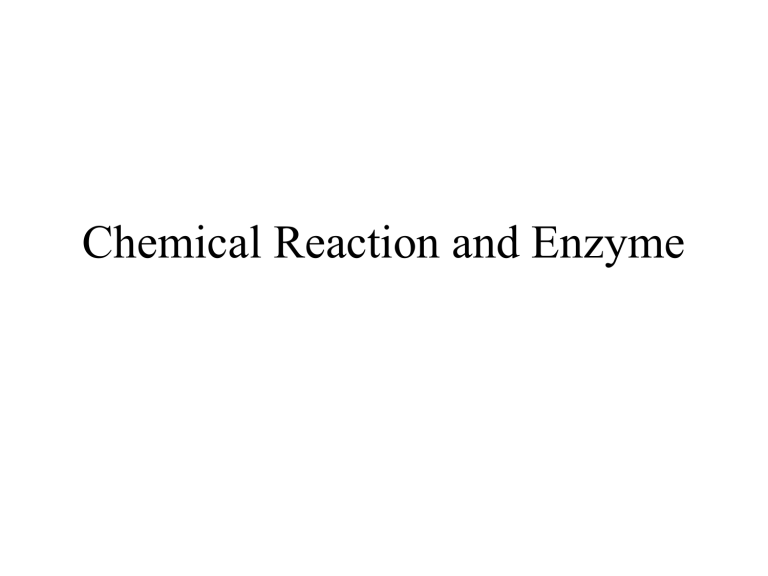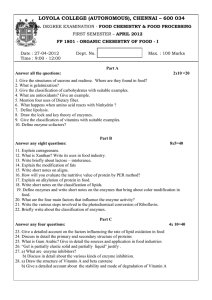
Chemical Reaction and Enzyme H. Chemical Reactions and Enzymes 1. Chemical Reactions– process that changes one set of chemicals into another set of chemicals. CO2 + H2O H2CO3 a. Chemical reactions always involve changes in chemical bonds that join atoms in compounds b. Reactants– starting materials of chemical reactions c. Products– newly formed molecule or end result of an chemical reactions. 2. Energy in Reactions– energy can be released or absorbed whenever chemical bonds are made or broken a. Energy changes are single most important factor determining how easily chemical reaction will occur 1). Chemical reactions that absorb energy (need energy to occur) will not proceed without a source of energy 2). Activation energy– energy needed to get reaction going; How tall is the energy hill? 3. Enzymes– specialized proteins that act as biological catalysts (catalysts– a substance that speeds up rate of chemical reaction by lowering a reaction’s activation energy) a. Living cells use enzymes to speed up virtually every important chemical reaction that takes place in cells. These reactions would otherwise be too slow to sustain life. b. Enzymes are specific to their substrate. c. Name of enzyme derived from reaction it catalyzes (ends with –ase) Ex: lactase breaks apart lactose d. Enzymes are not used up in a chemical reaction. e. Enzyme = Protein (chain of amino acids) 4. Enzyme action– can increase reaction speed 1010 times 1). reactants are known as substrates 2). Substrates bind to enzyme at Active site (shape of active site fits substrate like “lock and key”) 3). Once products made enzyme is free to continue catalyzing the process Enzyme Lactase Activity: • Enzymes are specific: lactase can only breakdown lactose, not sucrose. Factors affecting Enzymes 5. Enzymes affected by pH, temperature and the concentration of enzyme/substrate If an enzyme denatures because it is heated to too high of a temperature, then it will lose the 3D structure and its function. It may or may not be able to re-fold or renature. Important Enzyme in your Body Catalayse: breaks down hydrogen peroxide (H2O2) to water and oxygen. Amylase: breaks down starch into glucose in the mouth. Pepsin: works in the stomach to break down protein into amino-acids Trypsin: works in the small intestine to break down protein into amino-acids. • Identify optimal pH for Pepsin and Trypsin c. Cells can regulate activities of enzymes. Proteins turn a gene “on” or “off” so it is made into a protein or not.



